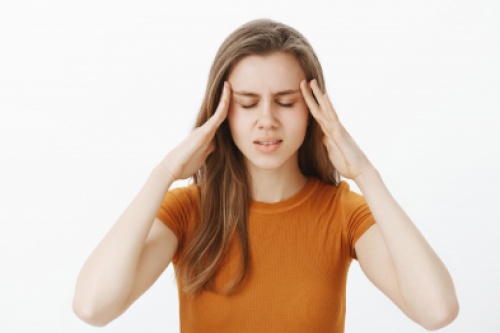Millions of individuals worldwide suffer from the frequent neurological ailment known as migraines. Migraine is a condition that causes severe headaches, nausea, and light sensitivity that can last anywhere from a few minutes to days. A person's quality of life may be negatively impacted by the debilitating nature of migraine headaches and their potential to interfere with daily activities. Even though homeopathy is an alternative therapy, traditional medicine provides several migraine remedies, such as painkillers and prophylactic drugs. Homoeopathy is a type of complementary medicine that stimulates the body's own healing mechanisms by using greatly diluted natural chemicals. Homoeopathy has been used as an alternative medicine for over 200 years.
Homoeopathy for Migraine
Homoeopathy is a well-liked complementary treatment for migraines. Among the homoeopathic migraine treatments are Natrum muriaticum, Bryonia, Iris versicolor, and Belladonna. These treatments are thought to function by bringing the body's own energy into balance, lowering inflammation, and enhancing blood flow.
One benefit of using homoeopathy for migraines is that it doesn't have the potential side effects of using painkillers and anti-inflammatory drugs, which are common traditional migraine remedies. When administered as prescribed, homoeopathic medications are generally safe, though some patients may develop allergic responses or other negative effects.
There isn't enough data to say whether homoeopathy works to cure migraines, according to a review of clinical trials on the subject that has been released in the Cochrane Database of Systematic Reviews. The general caliber of the data is regarded as being low, despite the fact that certain individual research has shown encouraging results. To evaluate whether homoeopathy is useful for treating migraines, more research is required.
Types of Migraine:
There are two main forms of migraine.
Classical migraine is another name for migraine with aura. In this form, a feeling of aura (neurological symptoms) such as visual disturbance, hemisensory complaints, hemiparesis, or dysphasia frequently precede the attack. Most often, a visual aura is present. The aura often lasts a maximum of sixty minutes and develops over a period of 5 to 20 minutes. A headache, feeling of unwellness, and/or photophobia accompany it. The agonizing headache could persist for four to seventy-two hours.
· Migraine without an aura
Ninety percent of migraine sufferers in women have this type of migraine, making it the most prevalent. This form of headache does not have an aura and only happens in episodes. An emotional condition, such as tension, euphoria, or any intense light or odor, may be the source of the headache. The headache primarily affects one side and gradually gets worse. The headache is frequently accompanied by nausea, vomiting, food intolerance, or sensitivity to bright lights and strong odors.
Prevalence of Migraine:
Females are more likely than males to experience migraines, with a male to female ratio of 1:3. Ninety percent of migraineurs have a family history of the condition. As people get older, migraine attacks become less common.
What Causes Migraines?
Genetic Propensity High Oestrogen Levels Sleep Deprivation Emotional Strain Noxious Odors
Migraine Symptoms:
The sort of vascular headache that occurs the most frequently is a migraine without aura. Moderate to severe headaches, a pulsating quality, a unilateral location, worsening by climbing stairs or engaging in other common activities, nausea and/or vomit, photophobia and phonophobia, and repeated attacks, each ranging 4 to 72 hours, are among the symptoms.
· Migraine With Auratic Symptoms
The premonitory symptoms of headache can include motor, sensory, or visual complaints. Most victims have stated that visual problems are the most prevalent. Headache, feeling dizzy, and photophobia follow the aura.
Homoeopathic Migraine Treatments
Belladonna
A popular homoeopathic treatment for migraines is belladonna. The deadly nightshade plant's byproduct, belladonna, is said to have anti-inflammatory and blood flow-improving properties. Migraines with throbbing discomfort, redness, and heat are frequently treated with belladonna.
Bryonia
A typical homoeopathic treatment for migraines is bryonia. Bryonia, which is produced by the white bryony plant, is thought to function by easing pain and promoting blood flow. When a migraine occurs accompanied by a monotonous, throbbing pain that gets worse with movement, bryonia is frequently prescribed.
Versicolor iris
Homoeopathic treatment for migraines that is frequently used is iris versicolor. Iris versicolor, which comes from the blue flag plant, is thought to have anti-inflammatory and blood-flow-improving properties. Iris versicolor is frequently prescribed for migraines that come with severe, excruciating pain and nausea.
Muriatic natrum
A typical homoeopathic treatment for migraines is natrum muriaticum. Natrum muriaticum, which is made from sea salt, is thought to act by easing inflammation and enhancing blood circulation. Natrum muriaticum is frequently prescribed for migraines that come with throbbing pain and susceptibility to light.
Conclusion
There are generally no risks associated with using homoeopathy to treat migraines, unlike conventional migraine treatments. While homoeopathy may offer some migraine patients some relief, it's vital to speak with a doctor before utilizing it as a therapy. To guarantee that you obtain the right care for your migraines, it is crucial that you see a doctor. Visit us and book an appointment now with Dr. Shubham Tiwary.
















